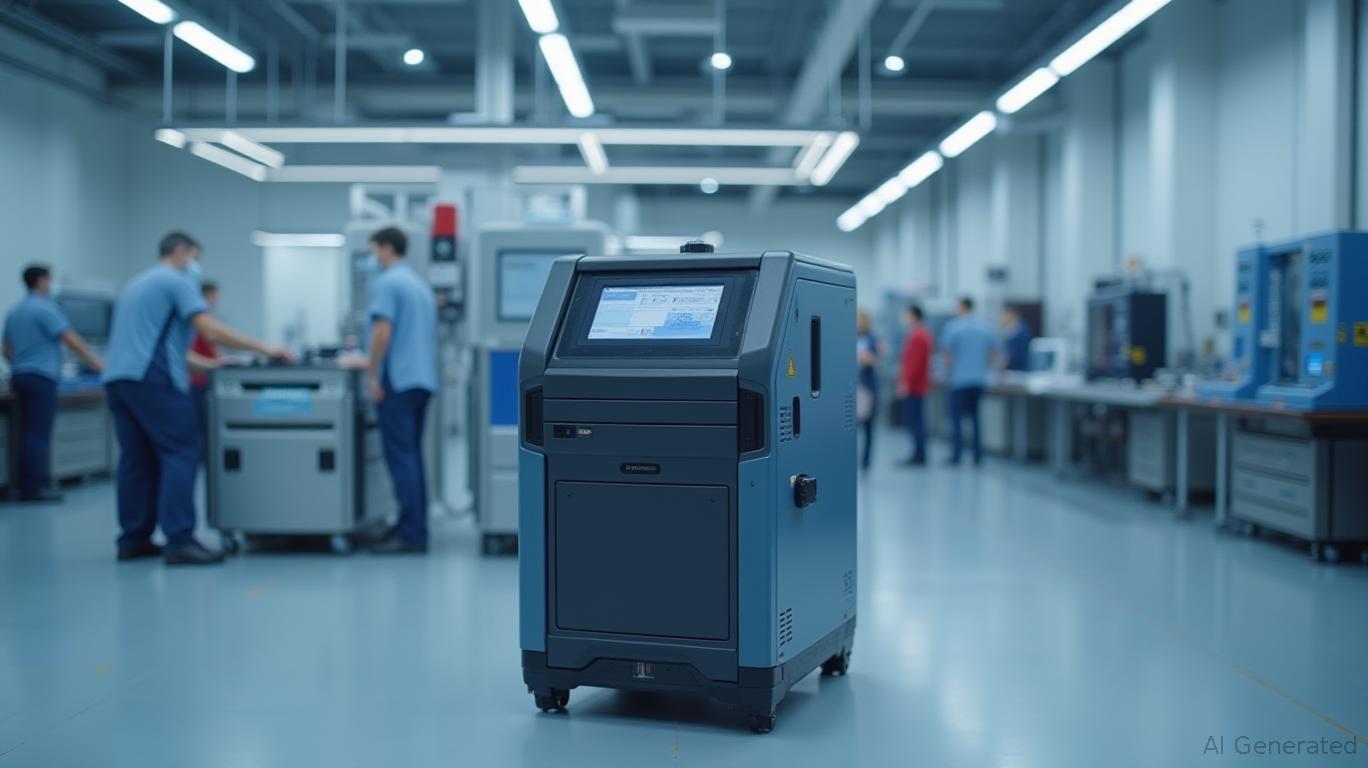AstroNova's Proxy Battle: A Test of Governance and Turnaround Resolve
AstroNova (NASDAQ: ALOT) stands at a crossroads. The company's proxy battle—pitting its veteran leadership against activist investor Samir Patel of Askeladden Capital—has crystallized into a high-stakes showdown over governance stability and operational execution. With the annual shareholder meeting looming on July 9, the outcome could determine whether the company's ambitious turnaround plans proceed as intended or face disruptive overhaul.
At the heart of the conflict is AstroNova's ability to execute its strategic realignment. The Board's plan hinges on three pillars: transitioning aerospace customers to its ToughWriter printers, launching advanced product identification solutions, and slashing supply chain costs. These initiatives are underpinned by a new executive incentive plan that ties pay to 3-year revenue growth (targeting 20-30% cumulative increases) and adjusted EPS goals ($1.35 to $1.85 by 2028).
But the Board's credibility is being tested. Patel, who controls 5.5% of the company, argues that AstroNova's current leadership has underperformed, citing an $8.6M operating loss in fiscal 2025 and what he calls “missed opportunities.” His proposed slate of directors includes nominees with no direct experience in specialized printing markets—a point the Board seizes on to question their qualifications.

Governance Stability: A Tale of Two Strategies
The Board's defense centers on its track record. Under CEO Gregory Woods, the company has grown revenue from $70M in 2014 to over $150M in fiscal 2025 through acquisitions like MTEX (2024) and strategic market expansions. The proposed nominees include Woods and Alexis Michas, a former
Patel, meanwhile, claims the Board has been unresponsive to shareholder concerns. But the Board counters that it engaged with him in March and June 2025, only to face scheduling delays. The crux of the debate lies in differing visions: the Board's long-term operational restructuring versus Patel's push for a more aggressive pivot, which they dismiss as unrealistic.
Operational Turnaround: Can the Plan Deliver?
AstroNova's financial targets for fiscal 2026—7% revenue growth (mid-point $162.5M) and an 8.5-9.5% EBITDA margin—rely heavily on executing its strategic initiatives. The ToughWriter transition is critical: the company's existing aerospace customers currently use legacy printers, and migrating them to ToughWriter could unlock recurring revenue streams.
The product identification segment, meanwhile, represents a growth lever in industries like healthcare and logistics, where AstroNova's expertise in label printing and RFID technology could differentiate it from competitors. However, these opportunities depend on execution—a risk highlighted by the $8.6M operating loss last year, which the Board attributes to MTEX integration costs and supply chain disruptions.
Investment Implications: Choosing Sides in a Governance Battle
Investors face a binary choice: back the experienced team with a proven track record of scaling the business, or gamble on an activist's disruptive agenda. The Board's incentive plan aligns management with shareholder interests, while Patel's push for “immediate” returns could pressure the company to prioritize short-term gains over long-term stability.
Crucially, AstroNova's valuation—currently trading at ~10x forward EBITDA—suggests markets are skeptical of its turnaround potential. A Board victory could stabilize the narrative, allowing the company to focus on margin improvements and market share gains. A Patel win, however, might trigger volatility as investors reassess the strategic direction.
Historical performance data adds context to this decision: over the past six years, buying
30 days before shareholder meetings and holding for 30 trading days after generated an average return of 12.4%, with a 90% hit rate and maximum drawdown of 8.7% during the holding period. This suggests a pattern of post-meeting stability favoring governance continuity—a trend that could reinforce the Board's case for patience.The Bottom Line
AstroNova's proxy battle is a microcosm of the broader tension between activist pressure and management continuity. For investors, the Board's execution of its growth and cost-cutting plans over the next 12–18 months will be decisive. If the company can deliver on its 2026 targets and achieve the ToughWriter transition, the stock could outperform. Conversely, a failure to stabilize margins or demonstrate progress risks further scrutiny.
As the July 9 vote approaches, shareholders should weigh whether they trust the current leadership's deep industry knowledge—or if a shakeup is worth the risk. The stakes couldn't be higher for this $1.2B market cap industrial tech firm.
Disclosure: This analysis is for informational purposes only and not a recommendation to buy or sell securities.

Comments
No comments yet